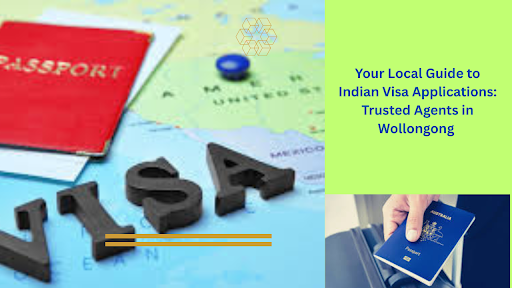Australia’s Orphan Relative Visa: Reuniting Families Safely

Australia’s immigration policies are not only designed to support efficient migration and economic development, but also to maintain human principles, especially when it comes to family reunions. One such human visa is an orphan relative visa that provides a route for children who have lost their parents or now they cannot be taken care of to join relatives in Australia. The orphan relative visa comes in two subclasses: subclass 117 (offshore) and subclass 837 (onshore). This article examines details, eligibility, the application process, and ideas related to this important visa.
What is an orphan relative visa?
An orphan relative visa is a permanent visa that allows a child to live with a relative in Australia. If their parents are dead, they cannot take care of them, or are missing. It is for minors under 18, who do not support their parents, but are a relative interested and capable of providing care and assistance in Australia.
There are two types of orphan relative visas:
- Subclass 117: For children outside Australia at the time of application.
- Subclass 837: For children on another visa already in Australia.
These visas allow children to permanently live in Australia, use healthcare and education with their relatives, and eventually apply for citizenship.
Who can sponsor?
Only a few relatives can sponsor an orphan relative visa applicant. This includes:
- siblings,
- Grandfather,
- Aunt and uncle (including step-dependence or relatives).
Should be sponsored relatives:
- An Australian citizen, permanent resident, or eligible New Zealand Citizen.
- At least 18 years old.
- Economically and emotionally ready to support the child
Eligibility criteria for a child
The child must fulfill the following criteria to either subclass 117 or subclass 837:
- The child should be a minor at the time of application and decision.
- The child should not marry, be engaged to marry, or be in a real relationship.
- There are no living parents who can take care of them. This includes cases where:
- Both parents are dead
- One parent is dead, and the other is unable to take care of the child (due to imprisonment, mental illness, or other serious issues)
- Both parents are missing
- The child should be sponsored by an eligible relative ready to take full responsibility for their care.
- With most Australian visas, the applicant must meet certain health standards
- The visa should follow the Australian child welfare laws and the laws of the child’s home country.
Application Process
1. Choose the Right Subclass
Determine whether the child is in or outside of Australia:
- Apply for Subclass 117 if the child is overseas.
- Apply for Subclass 837 if the child is already in Australia.
2. Gather Documents
Documents typically required include:
- Birth certificate or proof of identity
- Proof of relationship to the sponsor
- Evidence of the parents’ death, disappearance, or inability to care
- Consent documents from guardians or legal authorities
- Sponsor’s proof of citizenship or permanent residency
3. Lodge the Application
- Subclass 117: Apply by post to the Department of Home Affairs.
- Subclass 837: Apply from within Australia before the child’s current visa expires.
4. Wait for Processing
Time for treatment is variable and can last for 12-24 months or beyond this period. Some requests for additional documents could be made in the period above, or even for interview scheduling.
Visa Benefits
Once granted, the Orphan Relative Visa allows the child to:
- Live permanently in Australia
- Work and study without restriction
- Access Medicare, Australia’s public healthcare system
- Travel in and out of Australia for five years (after which a Resident Return Visa is needed)
- Apply for Australian citizenship if eligible
Key Considerations
Welfare of the Child
Australian immigration authorities act in the best interest of the child. Any concern with child exploitation, trafficking, or withholding of relevant information triggers visa refusal or large delays.
Costs Involved
As of mid-2025, the visa application charge is approximately AUD 3,055, though additional costs may apply for medical checks, police certificates, and document translation.
No Parents Alive or Able to Care
This requirement is strictly enforced. If even one parent is found to be alive and able to care for the child, the application may be denied. Proper documentation, including legal and medical reports, is crucial.
Legal Guardianship
In some cases, Australian family courts may be involved in assessing or establishing guardianship arrangements. The sponsor must be prepared for legal responsibilities similar to those of a parent.
General challenges and how to overcome them
Inadequate documentation: Always provide certified, translated copies of the death certificate, court order, or other legal documents.
Delay in processing: Attach a registered migration agent for assistance with complex cases.
Sponsor ability: It is important to demonstrate the ability of the sponsor to support the child. This includes financial capacity, living system, and commitment to the child’s good.
conclusion
Orphan relative visa is a kind and important immigration option for children in weak circumstances. This provides a permanent solution for minors who have lost their parents’ care and allows them to grow up in a safe, auxiliary family environment in Australia.
Although this process can be rigid, the result can be life-changing-only for the child, but also for the sponsor relative who receives the opportunity to provide love, care, and a stable future. Whether you are helping someone travel or navigating someone’s travel, understanding the eligibility, legal structure, and process is the first step towards reuniting families and achieving a better life for orphans.






